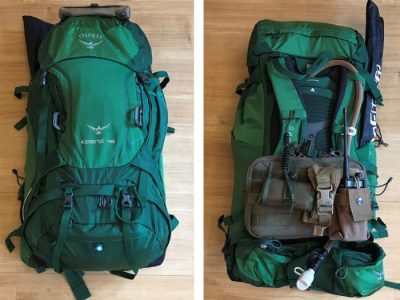Scout camp location selection criteria play a pivotal role in ensuring a successful and memorable outdoor experience for young adventurers. This comprehensive guide explores the key factors to consider when choosing the ideal site for your next scout camp, empowering you to create a safe, accessible, and enriching environment for your troop.
Site Characteristics

Selecting an appropriate site for a scout camp is crucial for ensuring a safe and enjoyable experience. Site characteristics play a significant role in determining the suitability of a location, as they impact factors such as accessibility, safety, and recreational opportunities.
Ideal site characteristics for scout camps include:
- Terrain:Flat or gently sloping terrain with good drainage to prevent waterlogging and ensure comfortable camping conditions.
- Vegetation:A mix of open areas and shaded groves to provide shelter from the sun and wind, as well as areas for activities and campfires.
- Water sources:Access to clean and safe drinking water is essential for hydration and sanitation. Streams, lakes, or wells should be available within a reasonable distance.
Potential Challenges and Limitations
Different site characteristics can pose challenges and limitations for scout camps:
- Steep terrain:Difficult to navigate, especially for younger scouts, and may require additional safety measures.
- Dense vegetation:Can limit visibility and make it difficult to find lost items or people. May also harbor pests or wildlife.
- Limited water sources:Can be a significant constraint, especially in dry or remote areas. May require hauling water in or using alternative water treatment methods.
Accessibility and Infrastructure

Accessibility and infrastructure play a crucial role in selecting a suitable scout camp location. They determine the ease of reaching and utilizing the site, ensuring a safe and enjoyable experience for all participants.
Transportation is a key consideration. The camp should be accessible via major roads or public transportation, enabling convenient travel for scouts and staff. Adequate parking facilities are also essential to accommodate vehicles during camp sessions.
Utilities
Reliable utilities, including electricity, water, and sanitation, are vital for the camp’s functionality. Electricity provides lighting, cooking facilities, and power for various equipment. Adequate water supply is crucial for drinking, cooking, and hygiene purposes. Proper sanitation facilities, such as toilets and showers, ensure the health and comfort of participants.
Potential Solutions
Addressing accessibility and infrastructure challenges may require creative solutions. For remote locations, shuttle services or ride-sharing arrangements can be organized to facilitate transportation. Solar panels or generators can supplement electricity supply, while rainwater harvesting systems or water filtration devices can ensure a reliable water source.
Portable sanitation units can provide temporary solutions in the absence of permanent facilities.
Safety and Security
In scout camp location selection, safety and security are paramount considerations. A comprehensive assessment of potential risks is essential to ensure the well-being of participants.
Key safety and security considerations include:
Natural Hazards
- Proximity to rivers, lakes, or other bodies of water that could pose drowning risks.
- Slopes or cliffs that may present a fall hazard.
- Areas prone to earthquakes, floods, or other natural disasters.
Wildlife
- Presence of venomous or dangerous animals such as snakes, spiders, or bears.
- Areas with a high concentration of ticks or mosquitoes that could transmit diseases.
Potential Risks
- Access to roads or trails that could allow unauthorized individuals to enter the camp.
- Proximity to residential or commercial areas where noise or disturbances may impact the camp experience.
- Availability of emergency services and communication systems.
Camp design and management play a crucial role in enhancing safety and security. Proper site layout, secure fencing, and well-defined boundaries help prevent unauthorized access. Designated fire areas, proper waste disposal, and regular maintenance minimize potential hazards. Additionally, establishing clear rules and guidelines, conducting safety orientations, and providing adequate supervision ensure participants’ well-being.
Environmental Impact
In scout camp location selection, environmental impact considerations are crucial for ethical and practical reasons. Choosing a location with minimal environmental impact ensures the preservation of natural ecosystems, protects biodiversity, and fosters a sense of environmental stewardship among scouts.
Potential environmental impacts to consider include:
- Deforestation:Clearing land for camp facilities can destroy habitats and reduce biodiversity.
- Water pollution:Improper waste disposal and chemical spills can contaminate water sources.
- Soil erosion:Heavy foot traffic and vehicle use can damage soil structure and lead to erosion.
- Wildlife disturbance:Noise and human activity can disrupt wildlife behavior and habitat.
To minimize these impacts, strategies include:
- Choosing existing clearings:This avoids deforestation and minimizes habitat destruction.
- Using biodegradable materials:Reducing waste and minimizing water pollution.
- Practicing soil conservation techniques:Installing erosion control measures and limiting vehicle use.
- Respecting wildlife:Observing noise restrictions, keeping a distance, and avoiding disturbing habitats.
Additionally, incorporating sustainable practices into scout camp operations can further reduce environmental impact:
- Using renewable energy sources:Installing solar panels or wind turbines.
- Conserving water:Implementing rainwater harvesting systems and promoting water-saving practices.
- Reducing waste:Encouraging recycling, composting, and using reusable materials.
- Educating scouts on environmental stewardship:Teaching scouts about conservation principles and responsible outdoor practices.
Cost and Budget
The selection of a scout camp location involves careful consideration of financial factors. The cost of a scout camp can vary significantly depending on several factors, including land acquisition, development, and maintenance. Understanding these costs and developing a budget are crucial for successful site selection.
Land Acquisition, Scout camp location selection criteria
Land acquisition is often the most significant expense in scout camp development. The cost of land varies widely depending on location, size, and availability. Factors such as proximity to urban areas, transportation networks, and natural amenities can influence land prices.
It is essential to research land values in the desired area and explore options for purchasing or leasing land to minimize costs.
Development Costs
Once land has been acquired, development costs must be considered. These costs can include infrastructure development, such as roads, utilities, and buildings. The size and complexity of the camp’s facilities will impact development costs. It is important to prioritize essential amenities and consider phased development to spread costs over time.
Maintenance Costs
Ongoing maintenance is a critical aspect of scout camp operation. Costs include upkeep of facilities, groundskeeping, and equipment maintenance. Establishing a regular maintenance schedule and allocating funds for unexpected repairs is crucial to ensure the camp’s long-term sustainability.
Funding Options
Exploring funding options is essential to secure the necessary capital for scout camp development and operation. Funding sources may include grants, donations, fundraising campaigns, and partnerships with local organizations. Developing a comprehensive funding plan and seeking support from the community can help reduce the financial burden on the scout organization.
Community Engagement

Engaging with the local community is crucial when selecting a Scout camp location. It fosters a sense of ownership, reduces potential conflicts, and promotes long-term sustainability.Involving the community provides valuable insights into the area’s history, culture, and potential hazards. It also allows for feedback on proposed camp activities and helps ensure that the camp aligns with community values.
Building Positive Relationships
Establishing positive relationships with the community requires open communication and transparency. Regular meetings, site visits, and community forums provide opportunities for dialogue and address concerns. Active listening and a willingness to compromise are essential for building trust and fostering a mutually beneficial relationship.
Addressing Concerns
Concerns raised by the community should be taken seriously and addressed promptly. These may include issues related to noise, traffic, or environmental impact. By proactively addressing concerns, the camp can mitigate potential conflicts and demonstrate its commitment to being a good neighbor.
Epilogue: Scout Camp Location Selection Criteria

Ultimately, selecting the perfect scout camp location requires careful consideration of site characteristics, accessibility, safety, environmental impact, cost, and community engagement. By adhering to these criteria, scout leaders can establish a foundation for an unforgettable camping experience that fosters growth, camaraderie, and a deep appreciation for the natural world.
FAQ Overview
What are the most important site characteristics to consider?
Terrain, vegetation, and water sources are crucial factors to assess for a suitable camp location.
How can I ensure accessibility for all scouts?
Consider transportation options, parking availability, and accessible pathways throughout the camp.
What safety measures should be in place?
Identify potential natural hazards, wildlife risks, and implement camp design and management strategies to mitigate them.
How can I minimize environmental impact?
Choose sustainable practices such as proper waste disposal, campfire management, and conservation of natural resources.
What is the typical cost range for scout camp locations?
Costs vary depending on factors like land acquisition, development, and maintenance; consult with local authorities and seek funding options.





